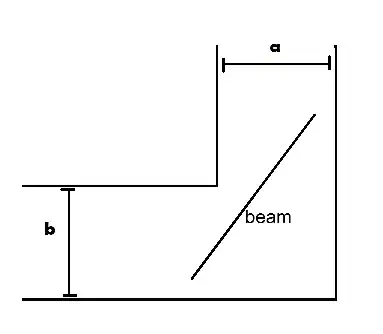The problem that I want to talk about is this: find the length of the longest beam (width = 0) that can be moved horizontally from a corridor of width $a$ into a corridor of width $b$. If the two corridors are perpendicular to each other.
Sketch of the situation:
Most of you have seen this.
My problem is not HOW to get the answer, but my problem is that I don't actually understand why the answer is in fact the answer we want.
To get the answer we looked for when the beam can get stuck, and we calculated the shortest beam that will get stuck and we concluded "The shortest beam that can get stuck is the longest beam that can get carried in the corridors."
THAT is my problem: why is the shortest beam that can get STUCK the longest beam that can get carried in the corridors? (This should be the title, but this was too long I thought)
What I thought of:
If we say $\mathcal{L} \in \mathbb{R}$ is the shortest length of the beam that can get stuck, then the longest beam must be smaller than $\mathcal{L}$. But we can't find the longest, because we can always find a longer beam that is smaller than $\mathcal{L}$. So, we will take the supremum of all beams with length $l$ that won't get stuck: $\underset{l<\mathcal{L}}{\sup} \{l\} = \mathcal{L}$.
So, is that the reason why we say that the longest beam is $\mathcal{L}$? If not, what is the reason then?
